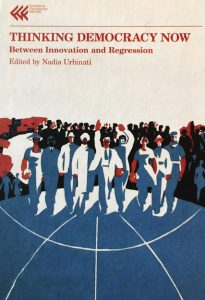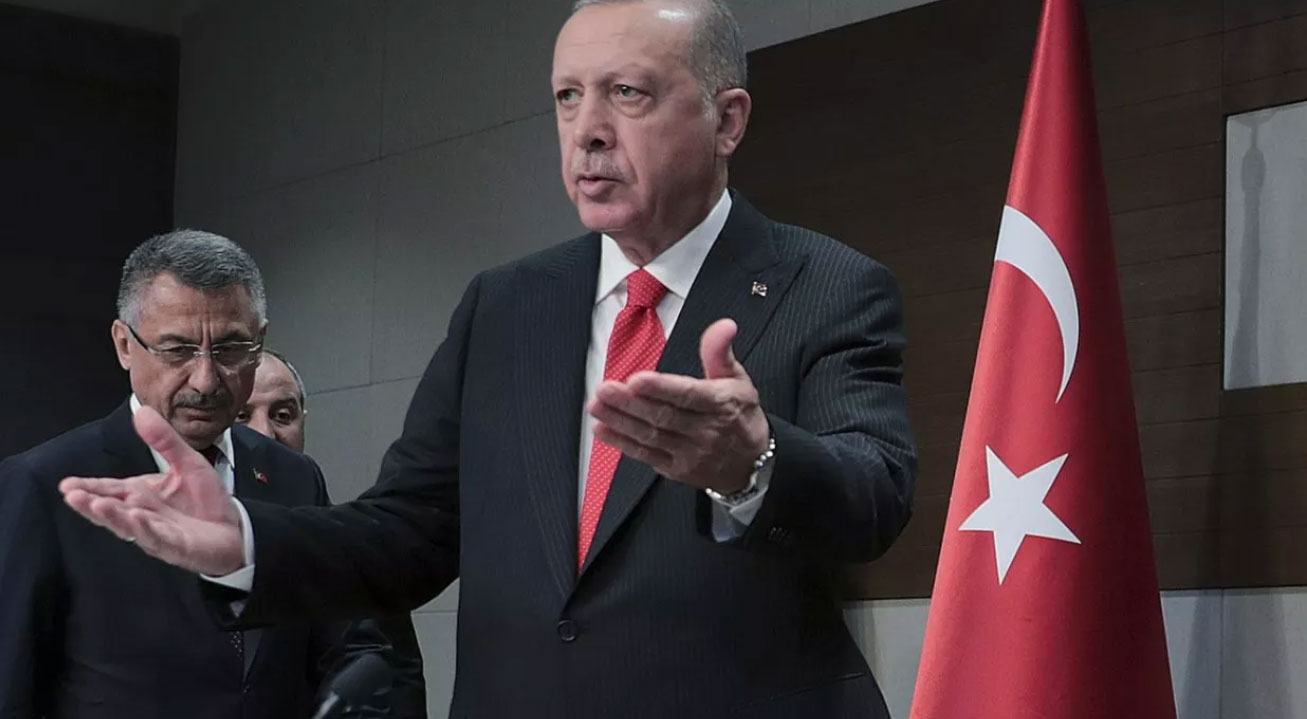Negli ultimi giorni abbiamo assistito ad un’intensificazione degli sbarchi di migranti sulle coste italiane. Si tratta in prevalenza di “mini-sbarchi”: gruppi meno numerosi di persone, su piccole imbarcazioni, per un numero maggiore di sbarchi, più difficili da intercettare ma anche da soccorrere in caso di naufragio. Nè il COVID in Europa, né le politiche anti-immigrazione sembrano costituire un disincentivo.
In uno studio della World bank, viene messa in luce una correlazione positiva, statisticamente rilevante, tra reddito e propensione a migrare. La forma che prende questa relazione è quella di una curva ad U invertita: all’aumentare del reddito aumenta l’emigrazione, fino ad un punto di flesso dove la propensione a migrare inizia a diminuire. Cosa significa questo? Con lo sviluppo economico aumenta il reddito pro capite disponibile. Quando il reddito si avvicina a 600 dollari annui, le persone hanno a disposizione o la possibilità di accedere a maggiori risorse per finanziarsi il viaggio verso paesi più ricchi. Allo stesso tempo, gli squilibri dovuti ad una crescita economica disuguale, fanno aumentare la povertà relativa: la posizione dei singoli individui migliora in termini assoluti per via del maggior reddito disponibile, ma la loro posizione all’interno della società peggiora per effetto dell’aumento delle disuguaglianze economiche e sociali, fornendo un potente incentivo per la migrazione. La propensione a migrare continua ad aumentare finché il reddito pro capite non raggiunge, in media, 6000-8000 dollari annui. Da questo punto in poi la propensione a migrare inizia a calare fino a diventare non significativa nei paesi a reddito medio-alto o alto. Questi dati ci forniscono un’idea di quanto a lungo le migrazioni potrebbero continuare: mettiamo che un paese si trovi oggi a disporre di un reddito pro capite di 2000 $ l’anno. Se la crescita economica continuasse ad un tasso del 2% annuo, sarebbero necessari all’incirca 60 anni per arrivare al punto di flessione della curva a U, quello in cui la propensione a migrare inizia a diminuire. Davanti a questo quadro, qualsiasi soluzione adottata fino ad oggi sembra essere giusto un palliativo: specialmente le proposte dei partiti identitari (o xenofobi) sono ottime per alimentare serbatoi di consenso e il risentimento sociale, ma non offrono nessuna vera soluzione. Non solo sono inaccettabili sul piano dei diritti umani, ma sono da rifiutare anche da un punto di vista puramente “pragmatico” in quanto non guardano al fenomeno come una risultante di uno sviluppo economico squilibrato e disuguale, quanto piuttosto come “falle nella sicurezza” dei paesi occidentali. Alla luce di questi dati, ci sembrano particolarmente significative le parole di Seyla Benhabib, docente di Filosofia e Scienze Politiche all’Università di Yale.
“Gli ultimi due decenni” – scrive – “hanno visto un’erosione del diritto internazionale che protegge i diritti dei rifugiati e dei migranti”. Per l’Europa e per le democrazie liberali la sfida è quella di “escogitare politiche di mobilità transfrontaliera che siano coerenti con il diritto internazionale, con il rispetto morale e con gli ideali di un popolo democratico”.
Proponiamo qui un estratto del suo saggio “Human Rights, Identity Politics and the Issue of State Borders” pubblicato nell’Annale Feltrinelli 2019 Thinking Democracy Now. Between Innovation and Regression.

During the summer of 2018 a ship full of refugees, the Aquarius sailing from the coast of Africa with 629 people on board, including 123 alone-traveling minors, 11 children and 7 pregnant women, stood at the center of the European refugee crisis. Denied admission to Italy by Minister Matteo Salvini, the Aquarius was eventually granted permission to disembark at the port of Valencia by Spain’s newly elected socialist government. This episode continued the enormous damage inflicted on the ideals of European unity, human rights, dignity and solidarity by the refugee problem. It is as if European nations cannot awaken from a nightmare which keeps revisiting them nearly half a century after the European trauma of the period between 1939 to 1945.
(…) The refugee is increasingly treated not only as an alien body but as the enemy who is interned in detention camps, held in deportation sites, or in absurd Euro-bureaucratic parlance, gathered in “hotspots”. (…) The image of the refugee at sea, as Itamar Mann has shown in Humanity at Sea. Maritime Migration and the Foundations of International Law, is a fundamental metaphor for the moral encounter between two human beings. The parable of the two men at sea alone on a raft has been widely discussed over the centuries in moral philosophy: if the raft has room only for one of us, what should I do: help the needy stranger and sacrifice my own life, or refuse help to the stranger and let him drown? This moral parable is intended to illustrate the conflict between our human duties to others versus our own self-interest in survival. Sometimes one must take precedence over the other.
(…) Today’s encounters at sea take place under the aegis of international law and treaties: the sea captain who is on international waters has an obligation to accept these individuals on board (as long as this can be done without great danger to the vessel) and bring them to safety ashore in some country where they can place their requests for asylum. If the refugee encounters ships sailing on designated national waters and the vessel is carrying the flag of a national government, there is an obligation to help the refugees and bring them ashore under the jurisdiction of that specific national government which is then obliged to process their applications for asylum in accordance with international law. In the case of Aquarius this would have been Italy which, by refusing to admit the refugees, violated its obligations under international as well as EU law.
(…) I argue that we must fight against the politics of ressentiment and of cruelty which is spreading all around us in the contemporary world and which targets refugees with impunity. This will require liberal democracies to marshal all their moral, political and cultural resources to search for responses congruent with the reflexive and fluid identity of each demos.
A report by the United Nations High Commissioner of Refugees (UNCHR) noted that at the end of 2015, the number of world-wide displaced persons had stood at 65.3 million (…). As the number of refugees world-wide has increased, not only has the number of camps grown but camps have ceased to be places where one held people temporarily; rather, they have become semi-permanent (…). This situation poses special challenges to the legal architecture of the world society of states. On the one hand, we see the uncoupling of the entitlement to universal human rights (or some list of them) from the status of national membership and citizenship; individuals are recognized as persons in the major international human rights documents of the post Second World War period in virtue of their humanity alone (vide International Covenant on Civil and Political Rights; International Covenant on Social, Economic and Cultural Rights); on the other hand, since the link between territorial presence and jurisdiction is a fundamental premise of the so-called modern state system, this uncoupling gives rise to ambiguous questions of jurisdiction (…). The obverse side of denaturalization is naturalization or gaining access to citizenship or to some kind of permanent membership or residency in a polity. There is no such human right in any of the international covenants although there are many provisions against denaturalization. Granting citizenship as well as the conditions in accordance with which it can be granted remain sovereign state privileges, as the 10 million stateless in our current world still testify (…).
(…) The European Union and Turkey concluded an agreement at the end of 2015 which committed Turkey to prevent, by force if necessary, refugees from crossing by sea or by land into European Union borders. For every refugee who had crossed and was returned from Greece, the EU pledged to take in one officially registered refugee from the camps in Turkey. It is unclear whether this condition has been upheld at all. Turkey currently houses around 3,5 million Syran refugees as well as many others from Iran, Irak, Afghanistan and other parts of the world. Although Turkey is a signatory to the 1951 Geneva Conventions, it only recognizes as a convention refugee those who have become refugees because of actions originating in Europe; in other words, refugees coming from non-European countries are not under the protection of the Geneva Conventions in Turkey but fall under Turkey’s own laws and legislation covering their status. Their status is governed by a Directive named the “Temporary Protection Directive” (“Geçici Koruma Yönetmeliği” adopted in 2013). Many Syrians have chosen to live at large in populated Turkish cities rather than stay in monitored refugee camps; some frequently cross the border to fight or serve as doctors, para-medics etc., in Syria. And many hold the hope, dangled by Erdoğan in front of them, that they may be given Turkish citizenship as a group. In the last Turkish election of June 2018, thirty thousand naturalized Syrians were allowed to vote. The Turkey-EU agreement reveals the dirty political aspects of refugee protection: the European Union, and in particular Germany and other northern countries to which most refugees housed in Turkey want to travel, are almost bribing the Turkish government to keep these individuals out of Europe. The millions of euros paid to the Turkish government, in turn, helps support President Erdoğan’s dictatorial regime!
(…) There is a great deal of disinformation among the public in many countries of the world about the extent and nature of migratory movements. This enables demagogues and populist politicians to whip up fear and anxiety among the population with phrases such as “invasion”, “takeover”, “flood of reguees” etc. (…) There has been an acceleration of both migratory and refugee movements in the last 15 years in Europe as well as world-wide. It is this acceleration which is giving rise to a sense of crisis. Within Europe. The largest part of the migratory movements are due to the European unification process, according to which “capital, goods, services and people” are free to move across state boundaries, and not to the movement of refugees and asylum seekers. Only 7.5 per cent of migrants residing in the EU are non-EU citizens, i.e., Third Country Nationals (including refugees). This intensifications of movement across borders has given rise both to an administrative and an identity crisis. Even in the world’s largest migration country, in the United States, which still leads the world’s migration statistics with 49.8 million, constituting more than 12 per cent of the US population, a sense of crisis has been manufactured by the increasing criminalization of migrants and refugees under the Trump Administration.
(…) Why did we get there? Why is it that most liberal democracies, such as the United States, Germany, Italy, the UK, France, Australia and the list can go on, are abdicating their principles of human rights, violating international law and creating zones of lawlessness in their midst by building refugee detention centers or permitting them to be built abroad? (…) The impact of neo-liberal financial globalization which moves capital, stocks and bonds across borders at the blink of an eye and which caused the crash of 2008. Large portions of the world economy have not recovered from this crash, and the loss in housing assets, in particular, have deeply impoverished the middles classes. In addition to the lingering effects of the crash of 2008, the spread of the world-wide net and the rise of the social media have caused deep fragmentation of the public sphere (…). Add to these momentous shifts, demographic changes leading to the increase of non-white populations of the earth while white populations age and live longer, yet migratory movements accelerate as a result of civil wars, domestic gang violence, climate change, and desertification and we have a perfect storm. Under these conditions, as the great sociologist Zygmunt Bauman noted, “strangers are dangers”. Bauman does not mean that strangers are objectively dangers; rather, he means that subjectively, the perception of strangers as dangers is easy, seductive, and psychologically deep-seated when human beings themselves are threatened and feel insecure. In the age of liquid modernity, to use another one of Bauman’s expressions, when fears and anxieties are high, demagogues, and right-wing politicians form Donald Trump to Matteo Salvini, from Viktor Orbán to Receb Tayyip Erdoğan find it easy to mobilize these sentiments. Blaming the stranger is a way of reducing complexity and avoiding responsibility.
(…) One particularly cruel aspect of migratory and refugee movements which greatly affect receiving communities is that while decisions concerning border crossings are made at the national level, the consequences are always experienced at the local level – by cities, municipalities, towns, and regions. Over-crowding in housing and decline in the value of housing assets; increased demands on local social services such as hospitals and schools, and sometimes increase of petty criminality among migrants themselves or among migrants and the native populations, are all felt intensely at the local levels. The irony is that all this is happening at a time when, in many countries of the west, governmental services are being either reduced or out-sourced to private entities. This renders the migrant population who lack adequate resources even more vulnerable while resentment increases among receiving local communities who find themselves often abandoned by their own public authorities. This sense of being abandoned by the state while being “dumped upon” to care for the poor migrant and the displaced asylum seeker exacerbates the fear among the population that they too could easily find themselves in the predicament of the unwanted and vulnerable stranger.
Do liberal democracies have the moral, political and intellectual resources to deal with these dynamics? Or must they succumb to the politics of fear and ressentiment?
(…) In the final analysis though, it is citizens, residents and others, networked across the borders, in transnational associations of solidarity who are the best guarantors of the rights of others and of the reflexivity of their own demo. The last two decades have seen an erosion of international law protecting the rights of refugees and migrants in many parts of the world, but it has benne the heroic and exceptional action of many civil society as well as national and transnational NGO’s that have kept thrown light on the condition of the most vulnerable. Courts as well, both international and domestic, have played a remarkable even if not uniformly pro-refugee role in this process.
The challenge to liberal democracies in the contemporary world is to devise cross-border mobility policies that are congruent with international law, consonant with the moral respect for persons and reflecting the best ideals embedded in the self-understanding of a democratic people. This is a dating task which liberal democracies must succeed if they are going to have a future worth defending for the coming generations.










